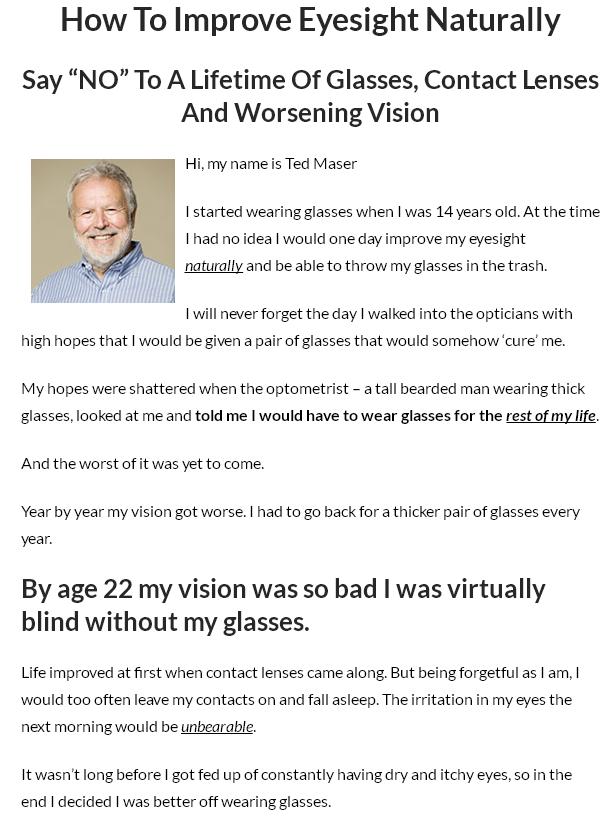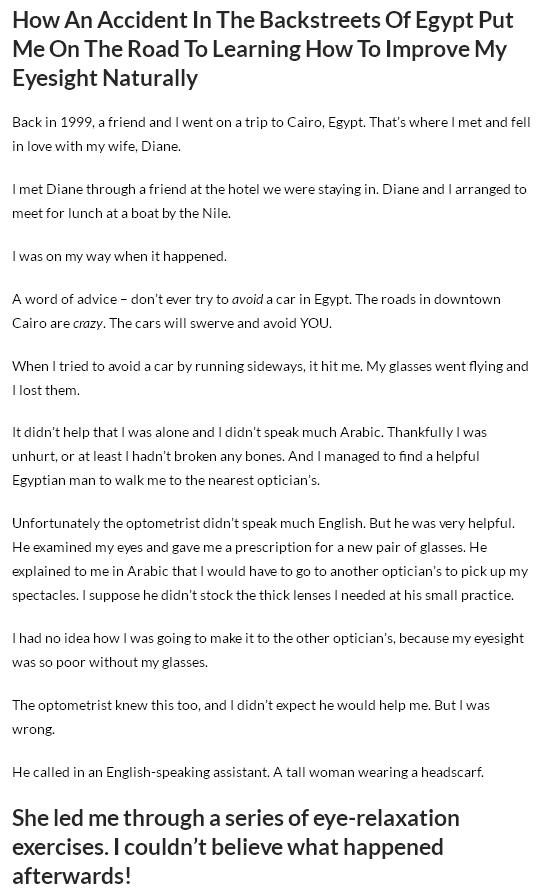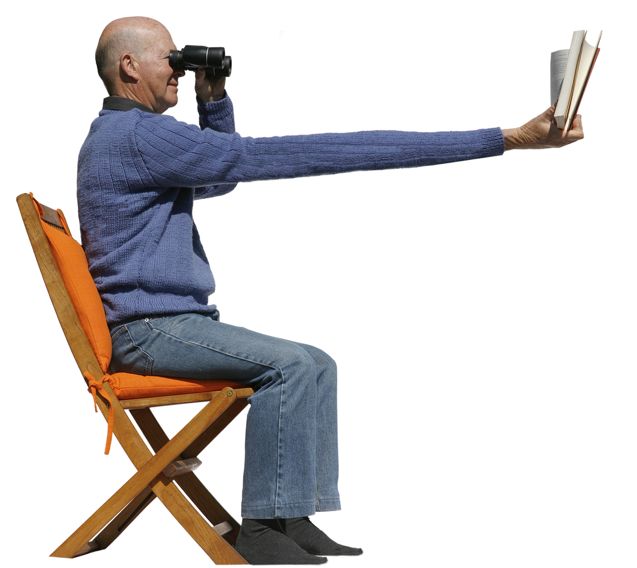Over the past four decades, the rates of nearsightedness have nearly doubled.
Do you find that you are having trouble seeing clearly from a distance? Do road signs appear blurry lately?
If so, you may be one of the many people suffering from “myopia,” also called “nearsightedness.” A condition in which close objects can be seen clearly, but objects further away appear blurred, myopia is on the rise.
In fact, studies indicate that rates of nearsightedness have skyrocketed around the world, especially among young people who spend their time indoors. About 40 years ago, about 25 percent of Americans between the ages of 12 and 54 suffered the condition, but today, that rate has climbed to 42 percent. Rates of the condition seem to be increasing among urban kids, in particular, as opposed to rural children, who spend more time outside.
Scientists used to think that myopia was all about genetics, but this rapid increase in recent decades has led them to believe something else may be going on. Here are their conclusions about what could be contributing to the deterioration in vision—and what you can do about it.
What is Myopia?
According to the American Optometric Association (AOA), myopia occurs if the eyeball is too long, or the cornea—the clear front cover of the eye—has too much curvature. As a result, light coming into the eye isn’t focused correctly and distant objects look blurry.
The AOA states that nearsightedness is hereditary, but acknowledges that growing evidence shows it may also be influenced by the visual stress of too much close work.
Too Much Time Indoors May be the Problem
It was in 2009 that the National Eye Institute (NEI) conducted a study that found the prevalence of myopia increased 66 percent in the U.S. between 1971-1972 and 1999-2004. Researchers examined data from the National Health and Nutrition Examination Survey to come up with the data, and theorized that an increase in near work like reading, surfing the Web, or texting could be partially to blame.
“If that is exclusively the kind of work that you are doing,” Dr. Roy Chuck, chairman of ophthalmology at Montefoire Medical Center in New York, told ABC News, “it is equally important to be outside playing, stimulating your far vision.”
Later, in 2012, researchers led by Ian Morgan of the Australian National University found that the epidemic of myopia is sweeping through Asian children, and is likely due to their spending too much time indoors and not enough time outside in the sunlight. Reporting in the journal Lancet, the scientists found that 90% of young adults in major East Asian countries, including China, Taiwan, Japan, Singapore, and South Korea, are nearsighted.
What is the connection? Researchers believe that eye growth is influenced by dozens of natural chemicals, including dopamine—which is increased by exposure to sunlight. More dopamine puts the brakes on eye growth, reducing the risk that the eyeball will grow too long, creating nearsightedness.
“We think there is a pretty well-confirmed mechanism,” Morgan told Time. “We postulate that bright outdoor light would stimulate the release of the retinal transmitter dopamine, which is known to be able to block the axial growth of the eye, which is the structural basis of myopia—the eye simply grows too big.”
In fact, an earlier 2007 study indicated the same thing—that time outdoors boosts dopamine levels, which reduces myopia rates.
Time Outdoors May Help
There is scientific data backing up the theories. In 2011, for example, researchers published the results of a meta-analysis of data involving more than 10,000 subjects. They concluded that being outdoors reduces the risk of myopia, with more time outside related to decreased nearsightedness.
For example, in this study each additional hour spent outdoors during the week decreased the risk of developing myopia by 2 percent. Children who were nearsighted stayed inside nearly four hours more per week than their counterparts who had normal vision. The children who were outside were performing no particular activities—it was just being outdoors that was protective.
Another study published in 2012 in the journal Investigative Ophthalmology & Visual Science, determined that playing outside could have a protective effect on kids’ eyesight. Specifically, 8- and 9-year olds who played a lot outside had half the risk of nearsightedness by the age of 15.
Risk for Other More Serious Conditions
Though it may seem that myopia is a minor problem, studies have shown that people with myopia are at an increased risk for other eye problems.
A 2013 study, for instance, published in the journal Investigative Ophthalmology and Visual Science, found that patients with myopia could be more likely to develop glaucoma, and are also at an increased risk for visual field defects (blind spots within the normal field of one or both eyes).
Compared with people of normal vision, those with mild myopia had a two-fold increased risk for visual field defects, those with moderate myopia had a three-fold risk, and those with severe myopia had a 14-fold increased risk. What’s alarming about these findings is that other research has shown that the earlier the condition starts, the more the eye may grow incorrectly, and the more the risk for other serious vision problems.
How to Reduce Your Risk
Overall, these studies indicate that more time spent outdoors is protective against nearsightedness, particularly in children. When it becomes too late to make a change is still unknown, but studies indicate that even at ages 8-9, you can still make positive impacts on eye health with exposure to sunlight.
Other steps that may help include limiting time spent at the computer, cell phone, iPad, and the like. While using these gadgets, regularly look up and out a window or across the room, to exercise your distance vision.
Do you have children with myopia? Do you encourage time spent outdoors? Please share your thoughts.
* * *
Sources
“Myopia (Nearsightedness),” American Optometric Association, http://www.aoa.org/myopia.xml.
“Urbanites weakening vision,” The Week, February 15, 2013.
Vitale S, Sperduto RD, Ferris FL 3rd. Increased Prevalence of Myopia in the U.S. between 1971-1972 and 1999-2004. Arch Ophthalmol. 2009 Dec;127(12):1632-9. http://www.ncbi.nlm.nih.gov/pubmed/20008719.
Alice Park, “Why Up to 90% of Asian Schoolchildren are Nearsighted,” Time, May 7, 2012, http://healthland.time.com/2012/05/07/why-up-to-90-of-asian-schoolchildren-are-nearsighted/.
Sarah Amos, “Study Finds Many More Nearsighted Americans,” ABC News, December 16, 2009, http://abcnews.go.com/GMA/OnCall/nearsighted-americans-texting-partially-blame/story?id=9347796#.UVCauHbCMYY.
Brian Hoyle, “More Time Outdoors Reduces Nearsightedness,” Medscape Medical News, October 25, 2011, http://www.medscape.com/viewarticle/752152.
Barbara Boughton, “Patients with Myopia at Increased Risk for Glaucoma,” Medscape Medical News, March 21, 2013, http://www.medscape.com/viewarticle/781166.
“Outdoor Play May Protect Children’s Eyes from Nearsightedness: Study,” Huffington Post, August 5, 2012, http://www.huffingtonpost.com/2012/08/05/outdoor-play-eyes-nearsightedness-myopia-eyesight_n_1734235.html.
Mohit Joshi, “Sunlight helps cut kids’ myopia risks by boosting dopamine levels,” TopNews, December 5, 2007, http://www.topnews.in/health/sunlight-helps-cut-kids-myopia-risks-boosting-dopamine-levels-279.
Nathan Seppa, “Urban Eyes,” Science News, January 24, 2013, http://www.sciencenews.org/view/feature/id/347738/description/Urban_Eyes.





I have verified this research with my own vision, noting a drastic compromise in vision when I’m in a big store with florescent lighting. The horror increases when we go to an optometrist practicing inside under florescent lights and get a prescription that is way too strong, which further compromises vision. I know someone who was recently overprescribed to the point of dizziness and migraines (with a $300 co-pay!!!). Another systems need a massive rehaul.
I have had nearsightedness since 7th grade, and have used both glasses and contacts. I also spend a HUGE amount of time outdoors , always, as an adult and child. (former PE teacher and camp counselor) Due to other health issues have begun to take a high quality cod liver oil supplement and noticed that my vision has gotten better. It really confused me at first as I am in my 40′s and had been having a hard time reading in low light, which I think is very typical. But then that stopped and I was having to take off my glasses to read because the lenses were wrong for reading. Again thinking that my eyes were doing the normal aging thing I began to try my husbands reading glasses which did not help. I have been on cod liver oil for almost a year and I read great in low light and even the small print on bottles has not bothered me. I hope to get to the Dr. for new glasses, need them anyway, but also to have my suspicions confirmed. Crazy fun, this nutrition stuff! So far none of our kids have glasses or problems with eyes and they are all taking cod liver oil, and all spend time outside as much as possible, we schooled on the patio 2 days this week, plus all their free time was outside.